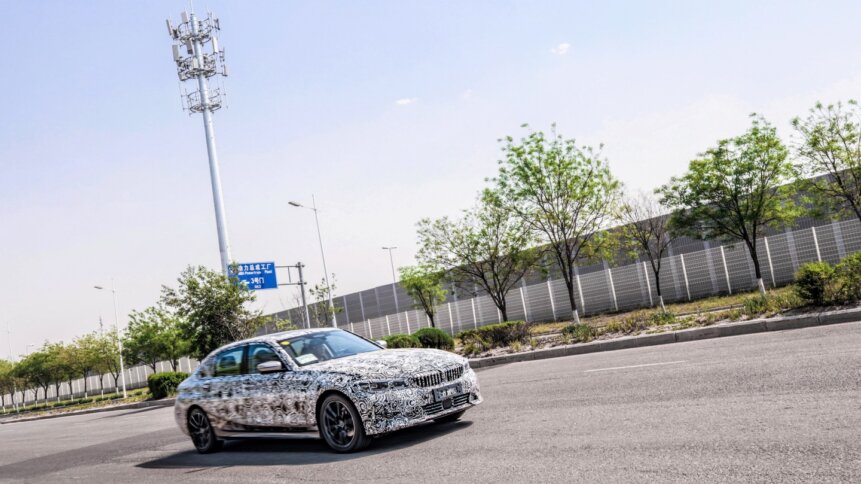Edge computing keeps 5G in the fast lane and on the pulse

One of the big plus points for 5G telecoms is low latency. Improving the time taken for devices to respond to each other over cellphone networks makes streaming services more enjoyable for customers. But movie and sports fans wanting to watch high-definition broadcasts on the go aren’t the only winners. Low latency 5G networks pave the way for other interesting use cases too, such as the roll out of roadside infrastructure for advanced driver assistance systems (the ultimate example being autonomous vehicles) and remote robotic surgery, which promises to be a game-changer in healthcare.
Heads up
To put things in perspective, it’s worth looking at where network performance stands today. Analytics provider RootMetrics has been busy carrying out 642,296 tests and driving 26,607 miles to measure the UK’s mobile network, as part of its ongoing analysis (which also includes reporting across the US, Canada, various European countries, and more). And in its latest 2022 mobile performance update, the firm found that 5G latency in the UK currently stands at ‘a little over 40ms’ – noting that the transition from 4G LTE to standalone 5G is by no means complete. Leading the way, however, is South Korea – with commercial 5G networks in the capital Seoul posting latency performance as low as 20 ms, again according to RootMetrics’ analysis.
Anything under 50 ms is good news for gaming on cloud platforms or streaming HD video, but 5G promises more – much more – with a theoretical latency of just 1 ms. And to do this requires some clever deployment of edge computing at mobile base stations – the cell towers that user equipment such as smartphones and other devices communicate with. Mobile edge computing, sometimes known as multi-access edge computing, shortens the journey between the user equipment and the compute used to perform data processing. And while some data may need to traverse into central cloud resources, the hardware at the edge can do much of the heavy lifting so that use cases demanding a fast response run seamlessly.
No delays
It’s a much more efficient architecture than packing additional processing power in user equipment, which would drive up cost and either shorten battery life or require larger power packs (adding more expense and bulk to the final product). Instead, lightweight mobiles can pack a powerfully dynamic punch by leaning on nearby multi-access computing. The arrangement also means that sensing products can be kept small – for example, units mounted on vehicles. In this scenario, devices could transmit their data to local roadside edge-nodes where the information would be interpreted quickly and relayed to other vehicles or traffic monitoring systems. And, thanks to the low-latency transmission, road users are kept in the picture at all times, and their positions tracked safely even at high speeds.
Another application requiring fast response times is remote surgery. Reporting on Vodafone Italy’s 5G Open Lab in Milan, Sabrina Baggioni – the division’s 5G Program Director – shares examples not just of a surgeon performing a medical procedure (in this case on a synthetic larynx model) remotely over a 5G network, but also of 5G connected ambulances in the city and hi-tech prospects for looking after patients in their own homes. Other vendors have been exploring the healthcare space too, in early-stage trials.
Back in 2019, Huawei teamed up with doctors at a university hospital in China together with automation experts from Suzhou Kangduo Robot Company to demonstrate that a 60 minute surgical procedure could be performed successfully over its network. According to the report, the surgical wounds were neat – a sign that the fidelity of the system was good. And, evaluating the performance of the test setup, the surgeon noted that their 5G experience was similar to the data responsiveness found when using an optical fibre link.
Beyond the delivery of telesurgery, other heathcare-related applications driving the development of edge-powered 5G include remote monitoring and diagnostics enabled through patient wearables – for example, to service the home care use cases mentioned by Vodafone’s Baggioni. For hospitals, the 5G networks would also help with asset tracking, infrastructure monitoring, and data-intensive tasks such as the transfer and computer-aided interpretation of medical images.
And there’s more
Edge computing can be applied elsewhere too – for example, by aggregating data gathered from hundreds of sensors to help power AI-assisted predictive maintenance in data centers, manufacturing plants, and other industrial facilities. And solutions don’t just have to share space with other users on public telco services – customers have the option of private 5G networks instead. A survey commissioned by Accedian – a provider of network monitoring solutions with its headquarters in Montreal, Canada – found that 75% of large healthcare enterprises plan to deploy private 5G networks by 2024. In the majority of cases, this will be based on a network slice made available by mobile network providers, with around a third (based on the survey’s results) choosing a hybrid on-prem/service provider solution, and the remainder opting for their own fully-dedicated 5G deployment.









